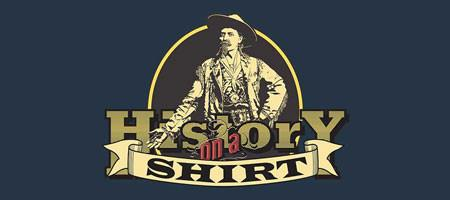Iwo Jima, Friday, 23 February 1945:
Seventy-five years ago today the most famous picture of the war was taken by Joe Rosenthal. But the Marines who were there paid more attention to the first flag raising, which meant Marines had made it to the top of Mount Suribachi. It should have meant the battle was over, but no such luck.
In the picture below, the Marines are carrying the flag to hoist on the improvised flag pole.

On this fifth day of battle, the Fifth Division raised the flag on top of Mount Suribachi. A second flag raising, of a replacement flag, was caught on film by photographer Joe Rosenthal and became one of the most famous pictures of the twentieth century.
Hudson was elsewhere at the time. He thinks he remembers seeing the flag being raised on Suribachi, but a flag on the mountain didn’t stop his fight, halfway across the island.
The beach slowly cleared; supply and evacuation worked better. The battered RCT 25 was ordered back behind the lines, though “behind the lines” on this tiny island meant nothing to artillery fire and hidden Japanese.
The platoon lost several men this day. Hudson’s platoon guide was shot in the chest; another Marine got hit in the ankle; one was taken out for combat fatigue (“went nutty as a fruitcake”) and another for shell shock. Shell shock is a physical effect on the brain after a nearby explosion. Men with combat fatigue act much like men with shell shock without necessarily having being near explosions. Combat fatigue, also called battle fatigue syndrome and combat stress reaction, is hard to define. Combat fatigue isn’t the same as, but can lead to, post-traumatic stress disorder (PTSD). The condition can look like cowardice or weakness, but is seen even in men who received the Medal of Honor. Combat fatigue seems to be related to how intense the fighting is compared to what the mind can accept. Iwo Jima was intense compared to almost anything.
Some went to hospitals. Some recovered easily, but for others recovery took a long time. Hudson never came close to “cracking up” on Iwo Jima, and thought he was strong enough he never would. Decades later, he isn’t so sure.
Another Marine’s description of 23 February said that by this time the terrain looked like the moon because of all the bomb craters, and the wind made the volcanic ash feel like buckshot in their faces. The fighting was hand-to-hand, chasing and being chased by Japanese in trenches. They fought grenade duels and often found themselves coming around the far side of a Japanese pillbox that was fighting from the near side.
After five days, Hudson’s unit had moved maybe a third of the distance they would eventually travel across the island. Their front line was close to the points they were supposed to have reached the first day. By now, they were supposed to have been finishing up this battle; nobody had expected its ferocity and severity. The Marines remained sure they would win, but “eventually” was the only word to describe when. All their strength, courage, training, and tactics weren’t getting them across the island on schedule. They settled into a routine of shooting and blowing up things during the day and protecting themselves from the Japanese at night. Still ahead of the Marines lay steaming volcanic terrain and the Meat Grinder.
Between the first few days of combat and his last day, events on Iwo Jima are cloudy in Hudson’s memory. Lack of sleep alone probably affected his memory, as the stages of sleep the Marines missed were the ones that would have built the neural connections necessary to retain memories. In addition to the lack of sleep, stress—from constant noise, mortal fear, deaths of friends, and destruction—helped confuse events. Also, the men were in almost the same place doing much the same thing for about four weeks; one day was much like another. So most of the following details about the position of Hudson’s unit come more from division histories than from Hudson’s notes.
On Iwo Jima, Hudson went so far as to question his choice of the Marine Corps. One day, somewhere in the middle of the battle, Hudson was in his foxhole and looked out at the ships offshore. He thought about the sailors sleeping in their bunks and eating three hot meals a day. But then a kamikaze plane hit one of the aircraft carrier tenders. There was no safe place in this battle. Hudson concluded, “If I had to do it all over again, I still would have joined the Corps.”
Sun Tzu, the ancient Chinese military expert, said that only those who understand the evils of war understand the best way to fight. Iwo Jima was making Private First Class Hudson an expert on fighting.
Excerpts are from Fighting the Unbeatable Foe: Iwo Jima and Los Alamos, now republished as a 75th anniversary edition in paperback and Kindle.
